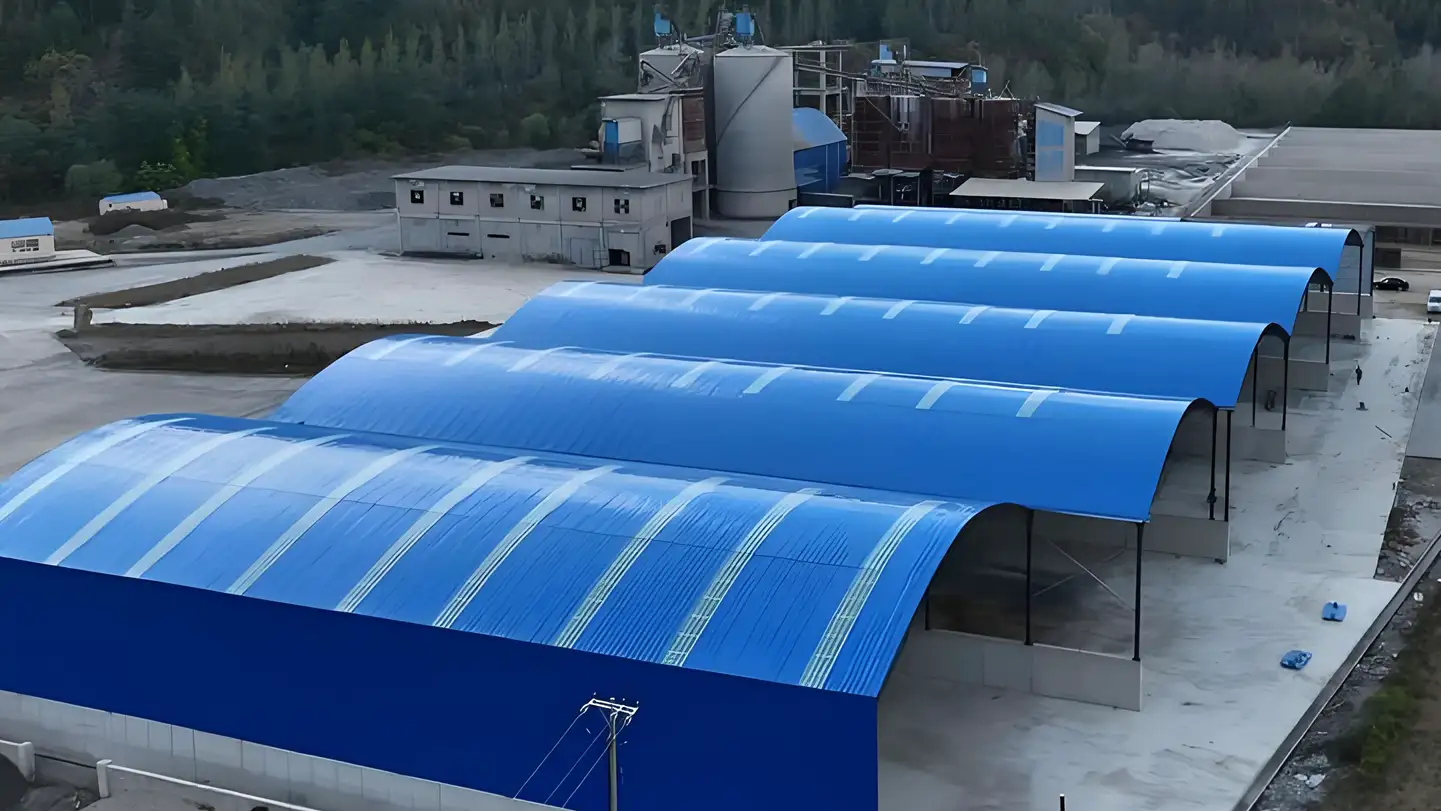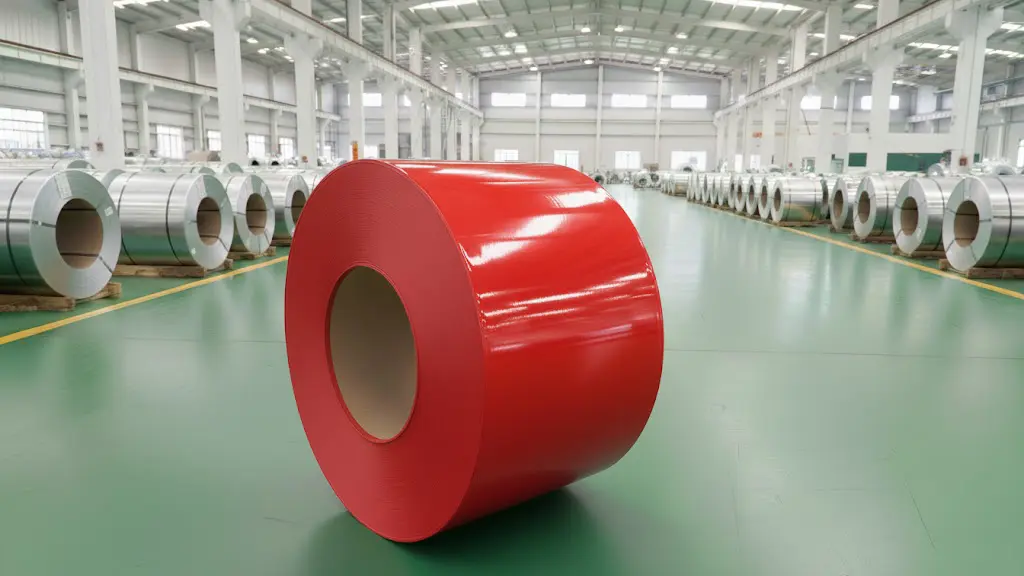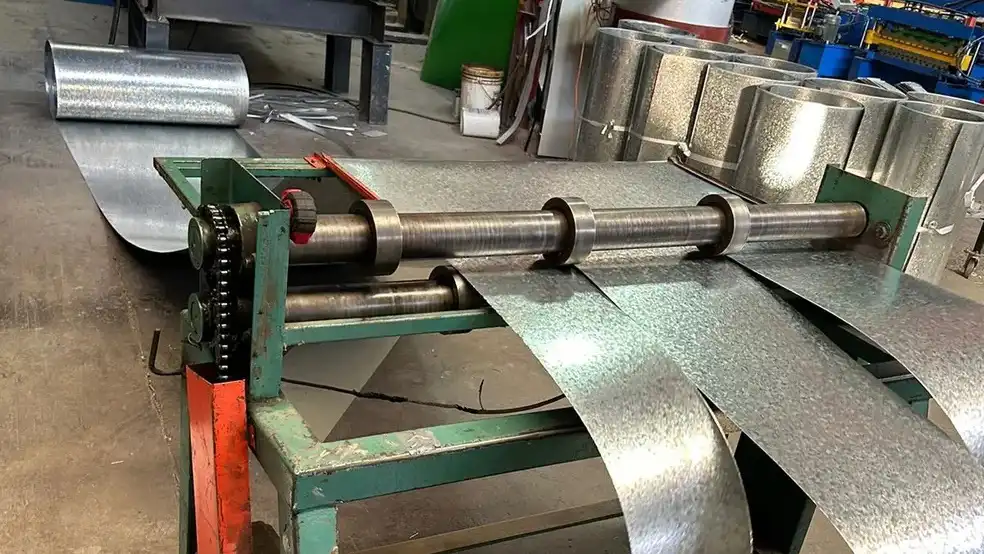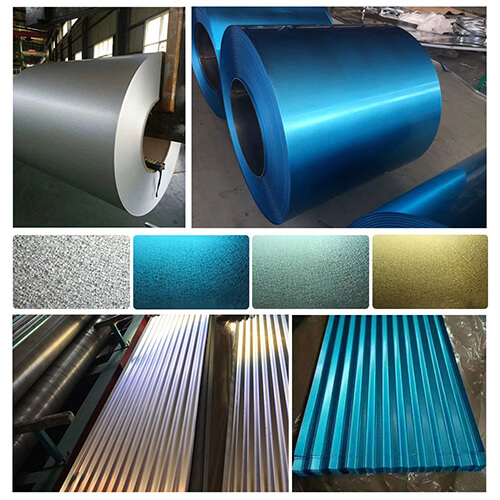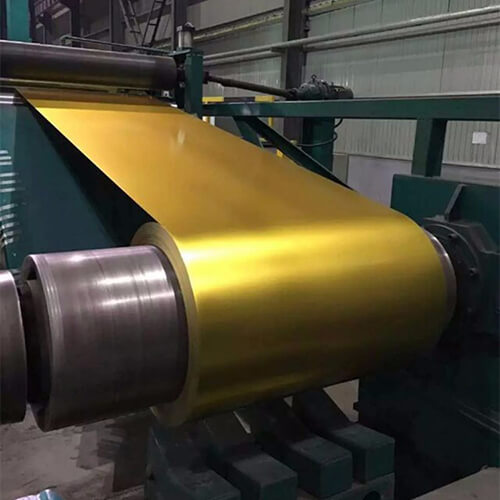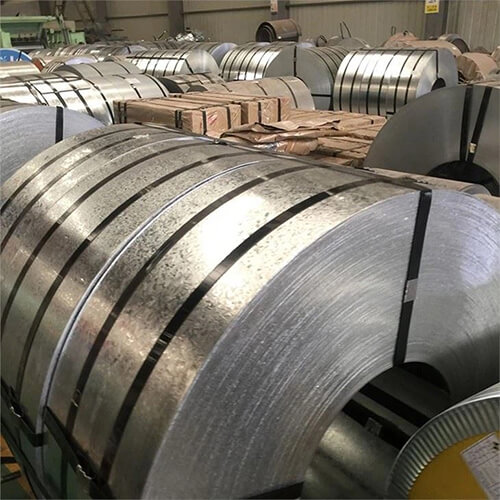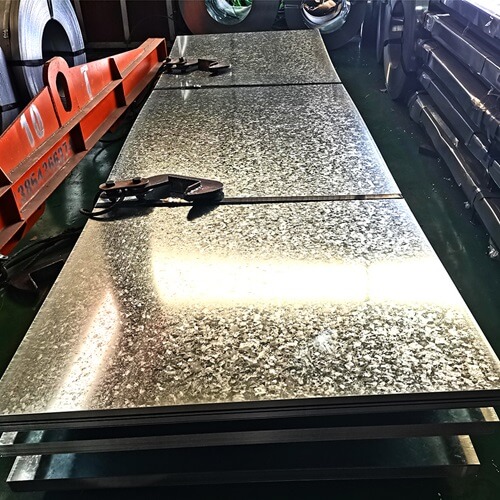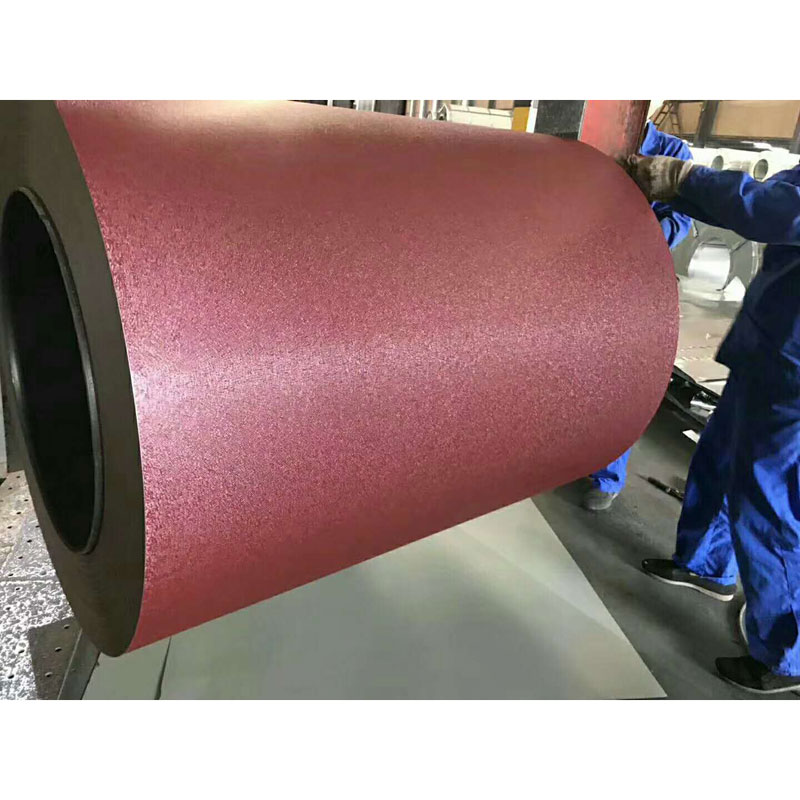You want your color coated roofing to last, even when you live in a humid climate. Rust, leaks, and weather damage can turn a beautiful roof into a problem fast. The secret? Pick top-notch materials, trust advanced coating technology, and rely on professional installation. When you choose color coated roofing, you give your roof a strong shield against rain and moisture. Products like color coated roofing sheets made from high-quality steel help you keep your roof looking fresh and vibrant, year after year.
Key Takeaways
- Choose high-quality color-coated steel roofing sheets for durability and moisture resistance.
- Ensure proper roof slope to facilitate quick water drainage and prevent leaks.
- Regularly inspect and clean your roof to catch issues early and maintain its appearance.
- Use advanced coating technologies like PVDF and polyester for long-lasting color and protection.
- Hire professional installers to ensure proper installation and warranty coverage.
- Incorporate anti-corrosion barriers and quality fasteners to enhance roof longevity.
- Schedule routine maintenance to prevent rust and water damage, saving money in the long run.
- Select roofing materials tested for wet climates to ensure they withstand heavy rainfall.
Color Coated Roofing in Humid Climates
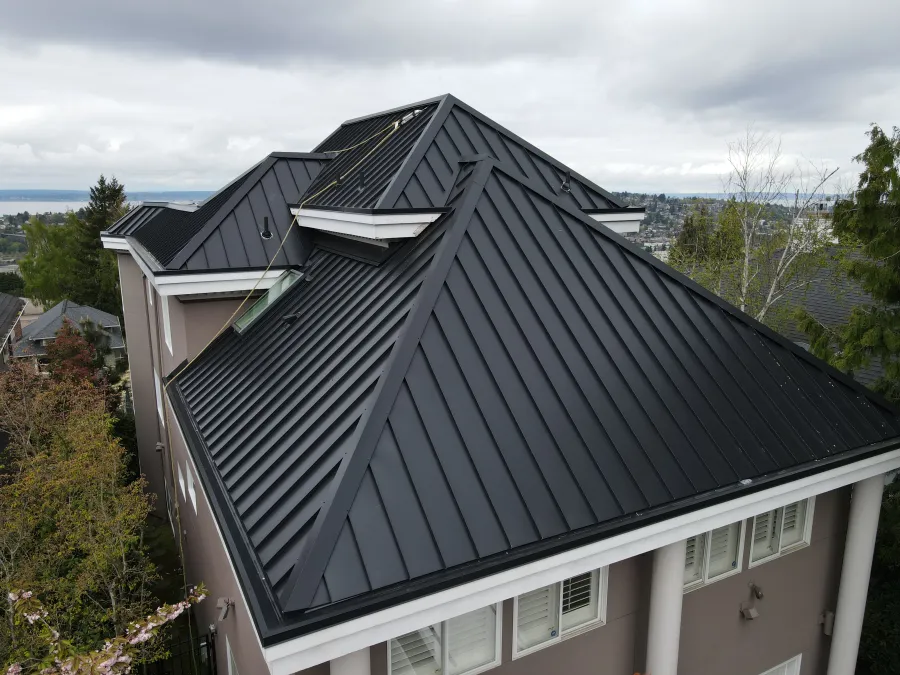
Key Durability Factors
When you live in a place with lots of rain and high humidity, your roof faces a real challenge. Water can sneak into tiny cracks, and moisture hangs in the air for weeks during the monsoon. If you want your roof to last, you need to focus on durability and weather resistance. Color-coated steel roofing sheets give you both. These sheets use a special coating that keeps water out and stops rust from forming. You get a roof that stands strong, even when the monsoon season brings heavy rainfall.
You might wonder why color-coated steel roofing sheets work so well in humid climatic conditions. The answer is in their design. The coating acts like a shield, blocking moisture and protecting the steel underneath. This means your roof keeps its color and strength, year after year. You also get great monsoon protection, which is important if you want to avoid leaks and water damage. When you choose high-quality sheets, you invest in long-term durability and weather resistance.
Tip: Always look for roofing sheets that have been tested for monsoon season. Products like WITOP’s color-coated steel roofing sheets are made to handle tough weather and keep your building safe.
Common Issues in Wet Conditions
Monsoon weather can cause a lot of problems for roofs. You might see leaks, rust spots, or even water stains inside your home. Color-coated steel roofing sheets help you avoid these issues. The coating channels rainwater away, so you don’t have to worry about water pooling on your roof. This design keeps leaks at bay and protects your home during the wettest months.
Rust is another big problem in wet climates. When steel gets wet, it can start to corrode. The color coating on these roofing sheets acts as a barrier, stopping rust before it starts. You get a roof that looks good and stays strong, even after many monsoon seasons. If you want to avoid costly repairs, choose roofing materials that fight off rust and water damage.
Here’s a quick look at how color-coated steel roofing sheets tackle common monsoon problems:
| Problem | How Color-Coated Steel Roofing Sheets Help |
|---|---|
| Leaks | Channels water away, prevents seepage |
| Rust and Corrosion | Protective coating blocks moisture |
| Water Damage | Keeps roof dry, stops stains and mold growth |
| Fading Colors | Advanced coating keeps colors vibrant |
You can see why so many people trust these sheets for monsoon protection. They give you peace of mind, knowing your roof will handle whatever the weather brings.
Material Selection for Wet Climates
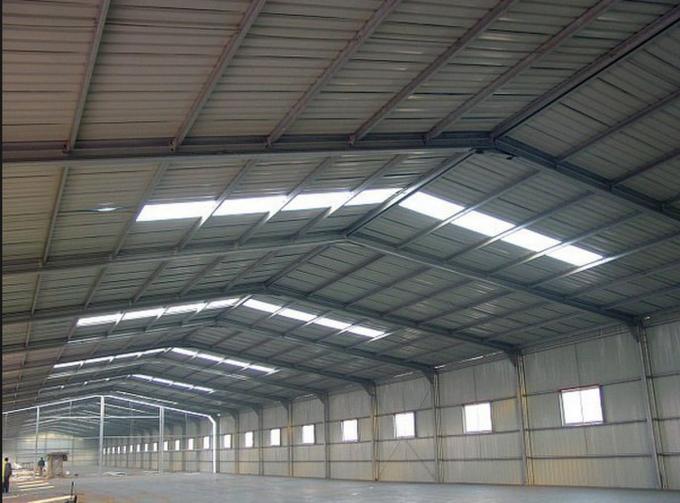
Choosing Color-Coated Steel Roofing Sheets
You want your roof to stand up to heavy rain and constant humidity. Picking the right material makes all the difference. Color-coated steel roofing sheets give you a strong, lightweight option that resists water and keeps your building safe. These sheets use high-quality PPGI and PPGL steel coils, which means you get a roof that lasts longer and needs less maintenance.
When you look for color-coated roofing sheets, pay attention to the slope of your roof. A good slope helps water drain quickly, so you avoid leaks and water buildup. Waterproof materials matter most in wet climates. Color-coated steel roofing sheets offer that protection, keeping moisture out and stopping rust before it starts.
Here are some things you should consider when choosing roofing materials for wet climates:
- Roof slope helps water drain fast and prevents leaks.
- Waterproof materials keep your roof dry and safe.
- Know the features of each material to match your local weather.
If you want a roof that looks great and performs well, color-coated steel roofing sheets are a smart choice. You get durability, style, and peace of mind.
Coating Technologies for Humid Climatic Conditions
The coating on your roofing sheets does more than add color. It protects your roof from rain, humidity, and even harsh sunlight. Advanced coating technologies make color-coated steel roofing sheets perfect for wet climates. You get a finish that stays glossy and strong, even after years of storms.
PVDF and Polyester Coatings
PVDF and polyester coatings give your roof a tough shield against moisture. PVDF coatings offer excellent resistance to fading and chalking, so your roof keeps its color longer. Polyester coatings add a durable, glossy finish that stands up to rain and humidity. Both options help prevent infiltration and protect your roof from early wear.
- High-performance waterproofing resin keeps water out.
- Glossy finish extends the life of your color-coated roofing sheets.
- These coatings work well on steel, concrete, and even acrylic surfaces.
You can trust these coatings to keep your roof looking fresh and vibrant, no matter how wet the climate gets.
Zinc and Galvalume Protection
Zinc and galvalume coatings add another layer of defense. Zinc protects steel from rust, while galvalume combines zinc and aluminum for even better corrosion resistance. When you choose color-coated steel roofing sheets with these coatings, you get a roof that stands up to moisture and external agents.
- Zinc coating blocks rust and keeps steel strong.
- Galvalume offers extra protection against corrosion.
- Both options help your roof last longer in humid conditions.
You get the best results when you combine these coatings with high-quality steel and expert installation.
Customization and Quality Control
You want your roof to match your style and meet your needs. Color-coated steel roofing sheets come in many profiles, colors, and thicknesses. You can pick wave-shape, trapezoid-shape, glazed tiles, or ridge tiles. You can choose any RAL color or even provide your own sample color. This flexibility lets you design a roof that fits your building perfectly.
Quality control matters just as much as customization. Reliable manufacturers use advanced testing equipment and professional teams to check every sheet. They test raw materials, thickness, width, and zinc coating. You get color-coated roofing sheets that meet strict standards for performance and reliability.
Here’s a quick table showing what you get with top-quality color-coated steel roofing sheets:
| Feature | Benefit |
|---|---|
| Custom profiles | Matches your building’s style |
| Wide color selection | Fits your design vision |
| Thickness options | Suits different project needs |
| Rigorous testing | Ensures durability and safety |
Tip: Always ask about quality assurance and customization options before you buy. You want roofing sheets that look good and last long.
When you choose color-coated steel roofing sheets, you invest in a roof that handles wet climates, matches your style, and stands the test of time. Pre-painted roofing sheets also offer similar benefits, giving you more choices for your next project.
Installation Best Practices
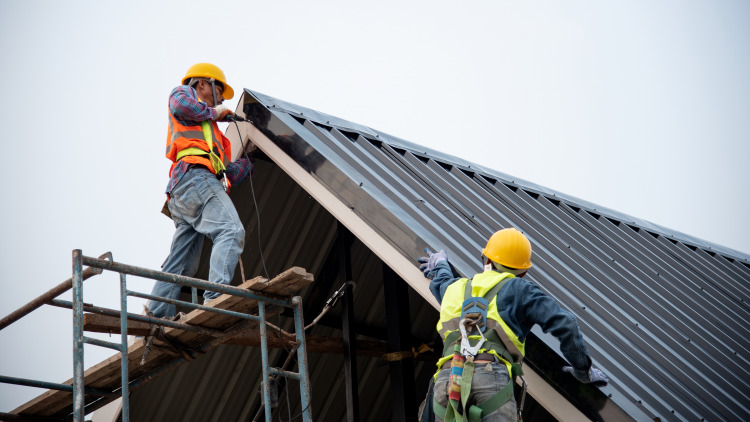
Roof Slope and Drainage
Getting the right slope for your roof is one of the best ways to protect your home during the monsoon. If your roof is too flat, water can pool and cause leaks or even damage the structure. In areas with heavy rainfall, you should aim for a slope that is steeper than 20%. This helps water drain quickly and keeps your roof dry, even when the monsoon brings days of nonstop rain.
A good slope also boosts weather resistance. When water runs off fast, it does not have time to seep into cracks or joints. You avoid waterlogging and reduce the risk of rust. Always check that your drainage systems, like gutters and downspouts, are clear. Blocked drains can lead to water buildup, which is a big problem during the monsoon.
Tip: Clean your gutters before the rainy season starts. This simple step can save you from leaks and water damage.
Waterproofing and Sealing
Waterproofing is a must for any roof in a humid climate. You want to keep every drop of water out, especially during the monsoon. Liquid membranes work well for waterproofing color coated roofs. They create a seamless barrier that blocks moisture and boosts weather resistance. Before you apply a liquid membrane, make sure the surface is clean, dry, and smooth. If you skip this step, the membrane might not stick well.
Some trusted brands for liquid membranes include Mantatec Laje, Quartzolit Branca, Dryko LajeTop, and VedaLaje Viapol. Apply these products only in dry weather and at the right temperature. Never try to waterproof your roof during rain or extreme heat. For best results, get help from a professional. They know how to spot problem areas and seal every joint and edge.
- Use liquid membranes for seamless protection.
- Clean and dry the surface before application.
- Avoid waterproofing during rain or very hot days.
- Hire a pro for a perfect finish.
Ventilation for Humid Conditions
Good ventilation keeps your roof healthy, especially in wet climates. When air flows freely, it carries away moisture that can build up under your roof. This helps prevent mold, rust, and other problems that often show up during the monsoon. You can add vents or ridge caps to let air move in and out.
If you ignore ventilation, trapped moisture can shorten your roof’s life. It can also make your home feel damp and uncomfortable. Regular inspections help you spot blocked vents or signs of moisture. Fix these issues right away to keep your roof strong and ready for the next monsoon.
- Add vents or ridge caps for better airflow.
- Check for blockages before the rainy season.
- Repair any damage to keep air moving.
By following these best practices, you give your roof the best chance to stand up to the monsoon and enjoy long-lasting protection.
Professional vs. DIY Installation
When you decide to install color coated roofing in a wet climate, you face a big choice. Should you hire a professional or tackle the job yourself? Both options have their pros and cons. Let’s break it down so you can make the best decision for your home.
Why Choose Professional Installation?
Hiring a professional roofing team gives you peace of mind. These experts know how to handle every step, from measuring and cutting sheets to sealing joints and installing drainage. You get a roof that looks great and stands up to heavy rain. Professionals use the right tools and follow safety standards. They also spot problems before they become expensive repairs.
Tip: Many manufacturers offer warranties only if a certified installer does the job. You protect your investment when you choose a pro.
Here’s what you gain with professional installation:
- Expertise: Roofing specialists understand local weather and building codes.
- Quality Assurance: You get a roof that meets strict standards.
- Warranty Protection: Most companies back their work with a guarantee.
- Safety: Pros use harnesses and safety gear to avoid accidents.
DIY Installation: Is It Right for You?
You might feel tempted to install your own roof. DIY projects can save money upfront and give you a sense of accomplishment. If you have experience with construction and the right tools, you can handle small repairs or simple installations. However, roofing in wet climates brings extra challenges. You need to get the slope, sealing, and drainage just right. One mistake can lead to leaks, rust, or even structural damage.
Here’s a quick table to help you compare:
| Factor | Professional Installation | DIY Installation |
|---|---|---|
| Skill Level | High | Varies |
| Time Commitment | Fast | Can be slow |
| Warranty | Usually included | Rarely included |
| Safety | High | Depends on you |
| Cost | Higher upfront | Lower upfront |
| Long-Term Value | Strong | Risk of issues |
What Should You Do?
If you want a roof that lasts through years of heavy rain, professional installation is the safest bet. You avoid costly mistakes and get support if something goes wrong. DIY might work for small fixes, but full roof installation needs skill and experience.
Note: Always check local building codes before starting any roofing project. Some areas require licensed installers for warranty and insurance coverage.
You want your color coated roofing to look good and last long. Choosing professional installation helps you get the most from your investment. If you decide to go DIY, make sure you understand the risks and prepare carefully. Your roof’s performance depends on how well you install it.
Roof Maintenance Essentials

Inspection and Cleaning
Taking care of your roof in a wet climate means staying ahead of problems. You want to spot issues before they get worse. Regular inspections help you catch trouble early. Try to check your roof at least once a year, especially in spring or early summer. After heavy rain or strong winds, take a closer look for any signs of damage.
Here’s what you should do during inspections:
- Look for leaks or moisture stains inside your home.
- Check for cracked, loose, or missing tiles.
- Watch for areas where water pools or drains slowly.
- Inspect gutters and downspouts for blockages.
Cleaning your roof keeps it looking sharp and helps the paint last longer. Debris like leaves and branches can trap moisture, which leads to problems. Use a soft brush and water to clean the surface. Avoid harsh chemicals or pressure washers that might damage the coating. Keep gutters clear so water flows away from your roof, not onto it.
Checking for Rust and Damage
You need to keep an eye out for rust and corrosion. These issues can sneak up on you, especially in humid climates. During your inspection, look for reddish spots or areas where the coating seems thin. If you see any, act fast. Remove debris and gently clean the affected area. If you find damaged tiles or cracks, replace or seal them right away. Preventive repairs save you money and headaches down the road.
Safe Cleaning Methods
Gentle cleaning works best. Grab a soft brush and a bucket of water. Sweep away leaves, dirt, and moss. If you see stubborn stains, use mild soap. Rinse with clean water. Never use metal tools or abrasive pads. These can scratch the paint and expose the steel underneath. Always clean your roof when the weather is dry. Wet conditions make surfaces slippery and dangerous.
Tip: Schedule cleaning after the rainy season. You’ll remove debris that built up and spot any new problems.
Ventilation and Drainage Upkeep
Good ventilation and drainage keep your roof healthy. When air moves freely, moisture doesn’t stick around. Check vents and ridge caps to make sure they aren’t blocked. Clean gutters and downspouts often. Water that sits on your roof can cause leaks and damage the paint. If you notice water stains or mold, improve airflow and clear out any blockages.
Here’s a quick table to help you remember what to check:
| Area | What to Look For | What to Do |
|---|---|---|
| Vents | Blockages, mold | Clean and repair |
| Gutters | Leaves, dirt, standing water | Remove debris, flush with water |
| Downspouts | Clogs, leaks | Unclog and seal joints |
Timely Repairs and Recoating
Don’t wait to fix problems. If you spot wear and tear, weather damage, or water infiltration, act quickly. Replace damaged tiles and seal any cracks. If you notice worn areas during your inspection, apply a fresh coat of paint or protective layer. Recoating every two to three years helps shield your roof from rain and sun. Staying on top of repairs keeps your roof strong and looking good.
Note: Preventive maintenance costs less than major repairs. You protect your investment and avoid surprises.
Regular care makes your roof last longer, even in the wettest climates. You get peace of mind and a home that stays safe and dry.
Accessories for Enhanced Protection
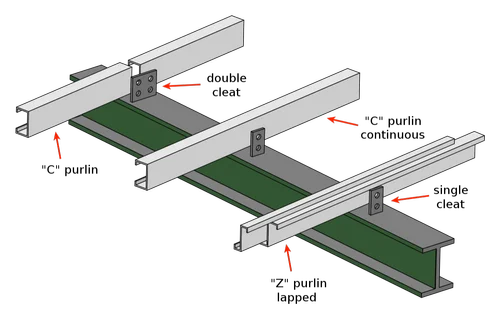
When you want your color coated roofing to last in wet climates, you need more than just strong sheets. Accessories play a huge role in keeping your roof safe and looking sharp. Let’s break down the essentials you should consider.
Flashings and Edge Treatments
Flashings protect the most vulnerable parts of your roof. You place them where two surfaces meet, like at valleys, ridges, and around chimneys. Flashings stop water from sneaking in and causing leaks. Edge treatments seal the ends of your roofing sheets. They keep wind and rain from lifting the edges or letting moisture seep underneath.
You can choose from different materials for flashings, such as coated steel or aluminum. Make sure the flashings match your roofing sheets for a seamless look. Here’s a quick checklist for flashings and edge treatments:
- Install flashings at all joints and roof edges.
- Use matching colors for a clean finish.
- Check for gaps after installation.
Tip: Inspect flashings every year. Replace any that show signs of wear or damage.
Anti-Corrosion Barriers
Wet climates can be tough on metal roofs. You need extra protection to keep rust away. Anti-corrosion barriers add a layer between your roofing sheets and the elements. These barriers come in the form of special paints, tapes, or underlays. They boost the corrosion resistance of your roof and help it last longer.
You can apply anti-corrosion coatings before installation or use protective tapes at joints and seams. Some manufacturers offer sheets with built-in barriers. Always ask about these options when you buy roofing materials.
| Type of Barrier | Where to Use | Benefit |
|---|---|---|
| Protective Coating | Entire roof surface | Blocks moisture |
| Tape/Sealant | Joints and seams | Stops leaks |
| Underlay | Beneath sheets | Adds insulation |
🛡️ Stay ahead of rust by using anti-corrosion barriers, especially in areas with heavy rainfall.
Compatible Fasteners and Sealants
Fasteners hold your roofing sheets in place. Sealants fill gaps and keep water out. You need both to make sure your roof stays secure and leak-free. Always pick fasteners that match your roofing material. Stainless steel or coated screws work best with color coated steel sheets. They resist rust and keep your roof strong.
Sealants should be flexible and waterproof. You use them around flashings, joints, and edges. Check the label to make sure the sealant is made for metal roofs. Here’s a simple list to guide you:
- Use stainless steel or coated fasteners.
- Apply waterproof sealant at all joints.
- Tighten fasteners but don’t overdo it.
Note: Loose fasteners can cause leaks. Check them after storms or heavy winds.
Accessories make a big difference in how well your roof stands up to wet weather. Choose the right flashings, barriers, fasteners, and sealants. You’ll enjoy a roof that looks great and lasts for years.
Mistakes to Avoid
Choosing color coated roofing for wet climates gives you a strong start, but you need to avoid some common mistakes if you want your roof to last through every monsoon. Let’s look at the biggest pitfalls and how you can steer clear of them.
Poor Material Choices
You might feel tempted to save money by picking cheaper roofing sheets, but that decision can cost you more in the long run. Low-quality materials often fail when the monsoon hits. They rust faster, lose color, and sometimes even let water seep through. You want to choose roofing sheets made from high-quality steel with advanced coatings. These materials stand up to heavy rain and humidity.
Here’s a quick checklist to help you pick the right materials:
- Look for color coated steel roofing sheets with proven durability.
- Check if the product has been tested for monsoon conditions.
- Ask about the coating technology and thickness options.
- Make sure the manufacturer offers customization and quality control.
Tip: If you’re unsure, ask for samples or certifications. Reliable suppliers will gladly provide them.
Neglecting Maintenance
You might think your roof is fine after installation, but skipping regular maintenance can lead to big problems. Dirt, leaves, and moisture build up quickly during the monsoon. If you don’t clean your roof and gutters, water can pool and cause leaks or rust. Small issues like loose fasteners or cracked tiles get worse if you ignore them.
Try these simple steps to keep your roof in top shape:
- Inspect your roof before and after the monsoon season.
- Clean gutters and downspouts to prevent water buildup.
- Check for rust, stains, or damaged areas.
- Fix problems right away to avoid costly repairs.
A little effort goes a long way. You protect your investment and enjoy a safe, dry home.
Improper Installation
Even the best materials won’t help if you install them incorrectly. Poor installation leads to leaks, weak joints, and fast wear—especially during the monsoon. You need to make sure the roof slope is right, the sheets are sealed, and the fasteners are secure. Professional installers know how to handle these details.
Here’s a table showing what can go wrong and how to avoid it:
| Mistake | What Happens During Monsoon | How to Avoid |
|---|---|---|
| Wrong slope | Water pools, leaks | Use recommended slope angle |
| Loose fasteners | Sheets shift, leaks | Tighten and check regularly |
| Poor sealing | Water seeps in | Use quality sealants |
| Skipped ventilation | Moisture buildup, mold | Add vents and ridge caps |
🛠️ Always hire certified professionals for installation. You get better results and warranty protection.
Avoid these mistakes and your color coated roofing will stand strong, even when the monsoon brings its worst.
Cost and Value Considerations
Upfront vs. Long-Term Costs
When you look at color coated roofing for wet climates, you might focus on the price tag first. Upfront costs can seem high, especially if you choose premium materials or professional installation. But think about what happens during the monsoon. Cheaper options often need repairs or replacements after heavy rain. High-quality roofing sheets stand up to moisture and last much longer. You save money over time because you avoid frequent fixes and replacements.
Here’s a quick comparison to help you see the difference:
| Cost Type | What You Get | Long-Term Impact |
|---|---|---|
| Upfront | Premium materials, expert install | Higher initial expense |
| Long-Term | Fewer repairs, less maintenance | Lower total cost |
If you invest in a strong roof now, you protect your home and your wallet for years. The monsoon season tests every roof, so durability pays off.
Maintenance and Warranty
You want your roof to keep its color and strength, even after many monsoon cycles. Reliable manufacturers offer warranties and maintenance tips that help you get the most from your investment. For example, some roofing sheets use UV protection and color fixatives to keep colors bright. Flexible materials like PVC tiles resist cracking and breaking, which means less worry about repairs.
Take a look at these common warranty and maintenance features:
| Feature | Description |
|---|---|
| Color Retention | UV protection keeps colors stable longer than regular tiles |
| Flexibility & Resistance | Flexible tiles don’t dry out or break, even in humid climates |
| Condensation Management | Good ventilation helps manage moisture inside your roof |
| Maintenance Recommendation | Use colored silicone for sealing and check it every year |
🛠️ Tip: Annual maintenance on silicone sealants keeps your roof leak-free during the monsoon.
Warranties often cover color retention and structural integrity. If you follow the maintenance guidelines, you keep your roof looking new and avoid costly surprises.
Value of Quality Roofing
Choosing high-quality roofing materials adds real value to your property. You get more than just protection from the monsoon. Modern roof paints boost durability and shield your home from harsh weather. They also make your house look better, which can raise its market value. Some paints reflect heat, helping you save on energy bills in warmer months. Waterproof layers stop leaks and prevent damage to your home’s structure.
Here’s why quality roofing matters:
- Durable paints protect against rain and humidity.
- A beautiful roof increases curb appeal.
- Thermal paints help keep your home cool.
- Waterproofing prevents costly repairs.
When you pick the best materials, you get a roof that stands strong through every monsoon. You enjoy peace of mind, lower maintenance costs, and a home that looks great year after year.
You want your roof to last through every rainy season. Choose high-quality color coated steel, trust expert installers, and keep up with regular maintenance. Here’s what works best:
- Pick advanced products for better protection.
- Schedule routine inspections and cleaning.
- Fix small issues before they grow.
Tip: Reach out to roofing professionals for advice and support. Proactive care keeps your roof strong and your home dry.
FAQ
How long does color coated roofing last in wet climates?
You can expect your color coated roofing to last 20–30 years if you choose high-quality materials and keep up with regular maintenance. Advanced coatings help protect against rust and fading.
Do I need to clean my roof often during the rainy season?
Yes, you should clean your roof after heavy rain. Remove leaves and debris to prevent water buildup. This simple step helps your roof stay strong and look good.
What’s the best way to prevent rust on my roof?
Pick roofing sheets with zinc or galvalume coatings. These coatings block moisture and stop rust. You should also inspect your roof for scratches or damage and fix them quickly.
Can I install color coated roofing myself?
You can handle small repairs, but full installation works best with professionals. They know how to get the slope, sealing, and drainage right. You get better results and warranty protection.
Which accessories help my roof last longer in wet climates?
Use flashings, anti-corrosion barriers, and waterproof sealants. Stainless steel fasteners work well with color coated steel sheets. These accessories keep water out and boost durability.
How do I choose the right color for my roof?
You can pick any RAL color or provide a sample. Choose a color that matches your building and local style. Lighter colors reflect heat, while darker shades offer a bold look.
What maintenance should I do every year?
Check for leaks, rust, and loose fasteners. Clean gutters and downspouts. Recoat worn areas if needed. Regular inspections help you catch problems early and keep your roof in top shape.




